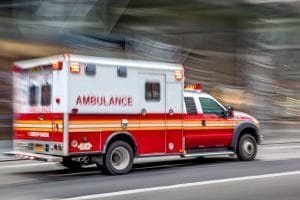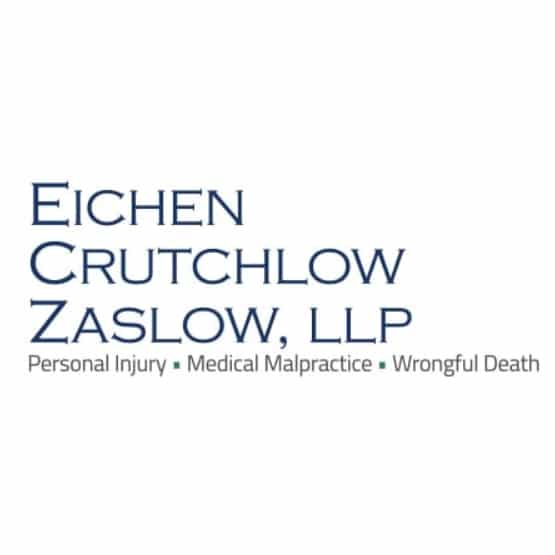Gas Line Contractor Seriously Injured in Cinnaminson Accident
 On Friday, June 11, around 3:30 in the afternoon, a gas line subcontractor working on replacing gas lines in Cinnaminson, New Jersey, was struck by a dump truck. The contractor suffered serious injuries to multiple areas of his body and was airlifted via helicopter to a local hospital.
On Friday, June 11, around 3:30 in the afternoon, a gas line subcontractor working on replacing gas lines in Cinnaminson, New Jersey, was struck by a dump truck. The contractor suffered serious injuries to multiple areas of his body and was airlifted via helicopter to a local hospital.
PSE&G has been replacing gas lines throughout Cinnaminson and neighboring communities in Burlington County since March and the work will continue well past the summer season. The construction worker has not been identified by authorities and an update on his condition has not been provided as of June 28.
The incident occurred on Winding Lane near the intersection with Wynwood Drive. It was reported that the construction worker was run over by the dump truck when it was operating in reverse and was run over multiple times by the rear wheels.
The Occupational Safety and Health Administration (OSHA) immediately sent representatives to the construction site to conduct an investigation into the accident. The results of the report are not yet available.
10 common safety concerns for NJ construction workers
Below, you will find 10 tips for construction site safety based on OSHA’s Top 10 Most Frequently Cited Standards in Construction.
Fall Protection – 1926.501 Duty to Have Fall Protection
Failure to have the proper fall protection is one of the leading causes of death in the construction industry. When working on a job site, every worker should identify and familiarize themselves with every possible fall hazard. Workers should not operate or work in any area where fall protection has yet to be installed. Workers should inspect fall protection systems before each use.
Scaffolds – 1926.451 General Requirements
OSHA estimates that close to 65 percent of all construction workers perform work on scaffolding. Workers on scaffolding are at risk of falling, falling objects, and electrocution. When a worker is on, around, or under scaffolding they should always wear an approved hard hat. Non-slip boots should be worn and tool lanyards should be used to prevent them from falling off the scaffolding to the ground below.
Stairways and Ladders – 1926.1053 Ladders
One of the most common causes of construction worker injuries and deaths is the improper use of ladders. Improper use of ladders includes not opening a ladder completely, choosing the wrong ladder, trying to carry tools by hand up the ladder, and not properly securing the ladder to the building. Workers should always maintain three points of contact when climbing up or down a ladder.
Fall Protection – 1926.503 Training Requirements
The top four OSHA standards most commonly cited by the agency have to do with workers suffering falls. Falls account for close to 40 percent of all construction deaths. Employers are required to provide training to employees who will be working on sites that have fall hazards present.
Personal Protective and Life Saving Equipment – 1926.102 Eye and Face Protection
OSHA has a requirement in place that workers must be provided with and wear eye and face protection when they are working around items that present hazards to the eyes and face. These situations include the following:
- Flying particles
- Molten metal
- Liquid chemicals
- Acids or caustic liquids
- Chemical gasses or vapors
- Potentially injurious light radiation
When a worker is required to wear eye or face protection, they should ensure that the protective equipment fits them properly and does not interfere with their natural movement. This protective equipment must be kept clean and in good condition or else it should be replaced before the next time it is to be worn.
General Safety and Health Provisions – 1926.020 General Safety and Health Provisions
Workers are to be notified that their general health and safety could be at risk when working in hazardous environments. Construction workers should be provided with the proper personal protective equipment (PPE) and provided with training for each hazardous situation in which they will be working.
Personal Protective and Life Saving Equipment – 1926.100 Head Protection
Whenever a construction worker is on a site where there is the risk of being hit in the head, which is almost all the time on any construction site. Workers should inspect their hard hats daily for cracks, signs of deterioration, or dents and get a new one if necessary.
Excavations – 1926.651 Specific Excavation Requirements
Performing excavation work is one of the most dangerous aspects of working on a construction site. The dangers present during this type of work include the following:
- Cave-ins
- Hazardous atmospheres
- Electrocutions from hitting utility lines
- Falls and falling loads
- Heavy equipment accidents
Construction workers should refrain from entering an excavation site until it has been properly inspected each day. Hard hats should always be worn and the correct protective systems should be installed prior to workers entering the site.
Scaffolds – 1926.453 Aerial Lifts
An aerial lift falls into the scaffolding category under OSHA standards. The dangers of using or working near aerial lifts include the following:
- Fall and ejections from the lift platform
- Tip-overs and structural failures of the lift
- Electric shock
- Contact with overhead objects or ceiling
- Struck by objects falling from lifts
Any construction worker assigned to an aerial lift should only operate it after receiving the proper training for doing so. The worker should only operate the aerial lift based on the recommendations from the manufacturer of the lift.
Fall Protection – 1926.502 Fall Protection Systems Criteria and Practices
This OSHA standard explains all of the fall protection systems and criteria that must be provided by employers and followed by employees. Personal fall protection systems should be inspected by the worker prior to each use, even if the system is used multiple times per day.
Were you injured on a New Jersey construction site? A co-worker, the general contractor, other contractors or subcontractors, or your employer could be held liable for your injuries if OSHA standards were not properly followed. Call the experienced New Jersey construction accident attorneys at Eichen Crutchlow Zaslow, LLP at 732-777-0100, or complete our contact form to schedule a consultation. We operate offices in Edison, Red Bank, and Toms River to better serve our clients throughout New Jersey.

Eichen Crutchlow Zaslow, LLP has purposely remained small in size, because it is important to us that we get to know our clients and their needs. Larger NJ injury firms may churn out case after case, but that’s not how we operate. Partners Barry Eichen, William Crutchlow, and Daryl Zaslow have created a firm with the resources to handle complex litigation, and a team that takes your case personally.
Find out more about Eichen Crutchlow Zaslow, LLP
